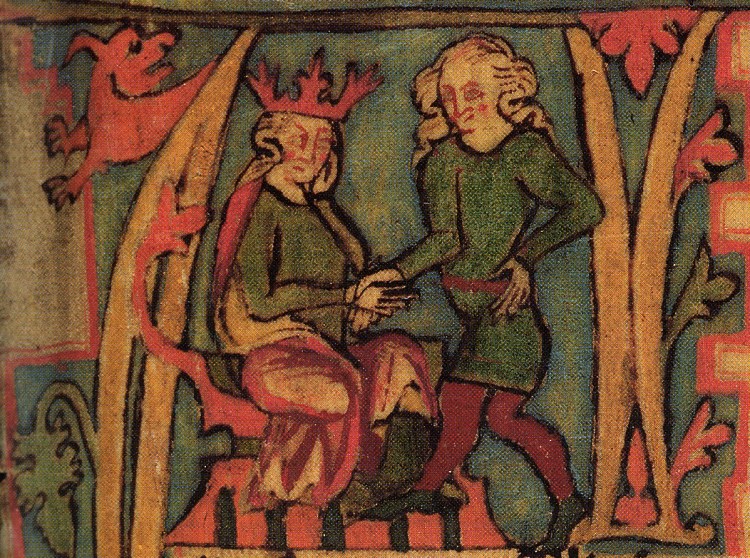PCA pastor and best-selling author Tim Keller was raised Lutheran, which is one of many reasons you should watch this interview.
Desiring God
Radio days
WVHU Radio AM 800, Huntington, West Virginia. 8:35 a.m. tomorrow (Thursday), the Tom Roten Show. An interview with me. Just in case you’re in the area.
I, Sniper, by Stephen Hunter

Yet another Bob Lee Swagger novel from Stephen Hunter, and let me tell you, this one’s a dandy. I, Sniper ought to please most any fan, unless he’s a liberal. (I suppose there could be liberal Hunter fans.)
The last couple of Sniper books seemed to be attempts to mix things up a little. The 47th Samurai, a tour de force of pure storytelling in the teeth of probability, took Bob Lee completely out of the shooting world, and into the world of the sword. Still perhaps my favorite in the series, it’s nevertheless a jog down a side road.
Night of Thunder was fun, but lightweight.
I, Sniper is plain, unadulterated Bob Lee Swagger, a mainline fix of pure sharpshooting goodness. It’s mainly about snipers, and even the non-sniping story line concerns shooting. Guns are central at every point, and Bob Lee shows the virtues of the wise old warrior—he may be a fraction of a second slower than the youngsters, but he’s three moves ahead of them at almost every point. Continue reading I, Sniper, by Stephen Hunter
My theory, what it is. And whose it is.

King Harald Finehair (standing) from a a saga manuscript.
Fair warning—we shall trudge a good distance into the deep Viking grass in this post. I’m going to propose a new paradigm for thinking about the Vikings, which will surely change Scandinavian studies forever. So if you come to this blog in spite of my Viking stuff, you’ll probably want to skip what follows.
I’ve written about some of these ideas before, but my surviving brain cells recently sparked across a couple gaps, and came up with Walker’s New Theory of Viking Norway.
It all starts with the origins of the Viking Age. The most common explanation for the sudden violence, quoted to this day in most books on the Vikings, is Overpopulation. The theory is that the Norse had so many babies that Scandinavia ran out of food and arable land. So hungry younger sons had to sail abroad to make their fortunes by the sword.
The problem with this theory is that there is not a scrap of evidence, either in archeology, the sagas, or outside accounts, for any food shortage at that time. This was in fact during the Medieval Warm Period, and life seems to have actually been pretty good. The popularity of the theory seems to arise solely from the fact that it harmonizes with Marxist ideology. Continue reading My theory, what it is. And whose it is.
The power of the airwaves
Just to remind you, if you live in the Huntington, West Virginia area, I’ll be interviewed on Thursday, January 20, on the Tom Roten Show on WVHU Radio, 800 AM. The time will be 8:35 a.m. eastern time.
Me, and other seagoing mammals

By カランドラカス from Kanagawa, Japan (dolphin’s dance) [CC-BY-2.0 (www.creativecommons.org/licenses/by/2.0)], via Wikimedia Commons
One of the many similarities between me and James Lileks is that we both lecture on cruise ships. Well, technically I have lectured on cruise ships twice, in return for a discount, while he lectures repeatedly, and apparently gets comped for the whole thing. In other words, pretty much the same thing. Today he posted this final report from his Panama Canal cruise with Hugh Hewitt and David Allen White, and he mentioned watching dolphins swimming along with the ship.
This brought back memories, not of my two Norwegian cruises, but of a couple of my own boating experiences. I’m not an old salt, though I’m descended from North Sea fishermen, but I’ve had a couple moments on the salt water that make notable memories.
Back when I lived in Florida, I was a charter member of a Sons of Norway lodge (one which, I believe, is now defunct. I don’t think my departure for Minnesota was the chief cause). The Florida lodges have a tradition they call the Viking Regatta. Each lodge has its own “Viking boat,” and they learn to sail and row them, and hold an annual race. Continue reading Me, and other seagoing mammals
Charles Williams: Inklings
Lanier Ivester finds something worth the trouble of pursuing in the writing of Charles Williams, who no doubt would have authored books today under the name Charlyz will.i.ams. No doubt about it.
A Riddle for Monday
I’m not good at riddles, but I love them still. This one has been a favorite since grade school.
What is the beginning of all eternity,
The end of time and space,
The beginning of every end,
And the end of every place?
Red Chameleon, by Stuart M. Kaminsky

I’d read one of the late Stuart M. Kaminsky’s Inspector Porfiry Rostnikov mysteries before, and liked it less than his other work. But in the wake of my enjoyment of James Church’s North Korean police procedurals, I decided to try another Rostnikov book, Red Chameleon. And indeed I enjoyed it more than I expected, though I don’t think this particular series will ever be my favorite section of Kaminsky’s oeuvre. That’s not a criticism of the writing. I just prefer the more positive tone of his American stories.
Chief Inspector Porfiry Rostnikov is a fire plug of a man. With one leg crippled during the Battle of Moscow in World War II, he compensates by lifting weights, and is immensely strong. He is also honest and compassionate, and thus doomed to eternal frustration in the Moscow police system.
Unlike James Church’s Inspector O, Rostnikov is not mortally committed to the Fatherland. In fact, in the previous book he made an attempt to blackmail his superiors into allowing him, and his son and Jewish wife, to emigrate to America (he loves American mystery novels, especially Ed McBain).
That effort failed, and now he’s been shunted off to obscure duties and “unimportant” cases, such as the murder of an old Jewish man in his bathtub. But then one of his superiors’ automobile is stolen, and Rostnikov is called up to the first team again, because the man really wants his car back.
Questions are asked, inquiries made. Cases intertwine. Facts are learned.
But the big lies must remain in place. For the “good” of all, and for safety’s sake.
Though not the most enjoyable of Kaminsky’s books (in my opinion), the Inspector Rostnikov books are probably his most literary. Kaminsky excels at sketching interesting, layered characters. One of the most interesting is, oddly, the one with the least personality, Inspector Emil Karpo. A man with no sense of humor at all (perhaps he has Asperger’s), unquestioningly devoted to the Revolution, Karpo could easily be made into a caricature and a figure of fun. Instead, Kaminsky presents him as a man whose concentration makes him a very good detective indeed, within his limitations. Rostnikov is wise enough to take advantage of his strengths and forgive his blind spots.
Red Chameleon is not a cheerful book, but it’s a very good one, in the Russian tradition, from an always reliable author. Recommended.
Deconstructing Jared
I apologize for adding to the sum total of posts about Jared Loughner. This will be the only one I do—I hope.
I found this post by Rich Horton at Blue Crab Boulevard extremely interesting. If you want a plausible scapegoat for the shootings, why not Jacques Derrida?
But if you absolutely need to blame someone else, why not look to the things that obviously did inspire Loughner? Like a lot of other people I too looked at Loughner’s YouTube ravings, and it became clear to me there was something Loughner drew upon as “inspiration” of a sort. Clearly Loughner had either been introduced to in college or read on his own something of the philosophical perspective known as “deconstructionism.” You can see this in his obsession with “grammar” and the supposed meaninglessness of language. Something like this was obviously the source of Loughner’s nonsense question to Giffords back in 2007. Loughner gets introduced to the idea that texts have no set meaning, and when confronted by a member of Congress whose very position and status is defined by a text (i.e. the Constitution) Loughner now believes is devoid of content, well, he begins to think of her as a charlatan or tyrant.
One of the most common accusations we hear from atheists is that religion drives people to violence. Many arguments against religion are framed in terms of religious people being inherently prone to murder, because we value dogmas over people. “Religion has killed more people than anything else in history,” we are told (such people never seem to notice the fact that, in the one century in which atheist governments have actually existed, they’ve managed to even—or better—the score).
But look at a non-religious methodology like Derrida’s deconstructionism. (I can’t claim to speak knowledgeably about deconstructionism. My comprehension of it is at the bonehead level. As is, without a doubt, Loughner’s). Deconstructionism, as I understand it, involves a belief that reality is so incredibly complex that we can’t actually know it in any way, that when we imagine we understand anything, we’re fooling ourselves. We can’t understand what words mean. We can’t be sure of our own experiences or memories. We can’t be sure that we interact with other human beings in any meaningful way. Under such a world view (at least as dummies like me and Loughner would understand it), we are utterly alone in the universe, adrift and unconnected.
Now please note my next point. I am not saying that deconstructionism leads inevitably to insanity and violence like the shootings in Arizona. I have no doubt that many deconstructionists are decent people, good neighbors, and caring parents. (Whether their lives are consistent with their philosophy is not the issue here.)
What I’m saying is that whatever world view you adopt, a metaphysic comes with it. And that metaphysic provides a form for the nut’s nutty ideas. Religion does not drive people to madness or violence. Religion—like ideology, and even literary theory—simply forms an armature on which the insane person builds his personal monster.
In fact, if a man must be insane, wouldn’t you rather he thought he was Jesus (and tried to act like Him) than that he thought he was Napoleon?
